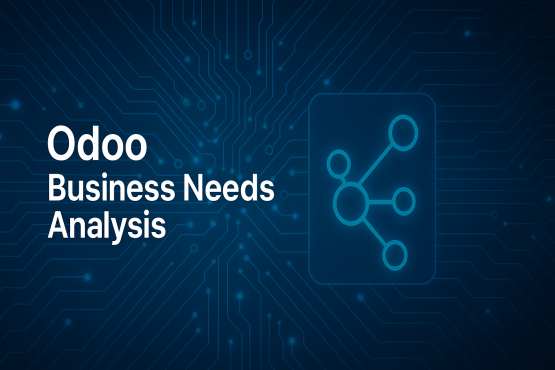🔍 Introduction
When planning your Odoo ERP rollout, one of the most critical steps is the Odoo Business Needs Analysis — the process that defines how the system will serve your actual business goals.
Without this step, many companies fall into the trap of over-engineering their ERP or recreating outdated processes. That’s exactly why the Odoo Implementation Methodology begins with structured discovery rather than extensive documentation.
In this article, I’ll walk you through how this step works, why it matters, and how to get it right — from concept to execution.
💡 What Is an Odoo Business Needs Analysis?
The Odoo Business Needs Analysis is the discovery phase where you define:
-
What operational challenges you’re facing
-
What outcomes you’re trying to achieve
-
Which Odoo apps and flows can support you with minimal customization
Simply put, it’s not about replicating your legacy systems — it’s about aligning your business needs with what Odoo does best.
Moreover, unlike traditional ERP discovery processes, which often prioritize features over function, Odoo’s approach focuses on real business outcomes and faster value delivery.
🚀 How Odoo Quickstart Uses Business Needs Analysis
In Odoo’s agile implementation model, the Business Needs Analysis is designed to be both efficient and impactful.
To begin, we organize one or two short discovery workshops.
Following that, we walk through realistic business use cases using the standard Odoo interface.
Then, we identify early wins and possible gaps.
Finally, instead of spending weeks on documentation, we deliver a functional prototype.
Because of this structured process, Odoo implementations become faster, leaner, and more user-centered from the start.
For more context, you can explore Odoo’s official implementation strategy, which reinforces this principle.
🏭 Use Case: Inventory Visibility for a Distribution Business
Let’s look at a real-world scenario. A mid-sized distributor approached us with a comprehensive 60-page ERP requirements document. However, during a single workshop, we quickly uncovered that:
-
70% of their listed needs were already covered by Odoo Inventory and Purchase apps
-
The core issue was their inability to track stock across multiple warehouses
As a result, we were able to steer the conversation toward actual business pain points rather than feature checklists.
Here’s what we implemented:
-
Barcode scanning
-
Smart reordering rules
-
Warehouse-specific stock alerts
🎯 Outcome: 22% improvement in inventory turnover — all within just 3 months.
🧪 Project Scenario: Odoo Discovery Without Documentation
In contrast, another client — a growing service firm — came in with no system documentation at all.
Despite that, we scheduled a 2-hour discovery session and invited key department leads to participate.
During the session, we identified core issues around project tracking, timesheets, and invoicing.
By the end, we had mapped their problems directly to:
-
Odoo Project
-
Odoo Timesheet
-
Odoo Invoicing
Subsequently, we built a prototype within one week and began validation immediately.
Consequently, they went live in under 6 weeks with minimal training and strong user adoption.
✅ Ahmed’s Tip: The earlier you move from assumptions to actual workflows, the higher the implementation success rate.
📋 Checklist: How to Prepare for Your Odoo Business Needs Analysis
To make your Business Needs Analysis workshop productive, it’s important to prepare properly.
Here’s a simple checklist I recommend for all clients:
-
✅ Define your top 3 business goals for the next 6–12 months
-
✅ List 3–5 challenges slowing your operations today
-
✅ Identify your key departments and how they interact
-
✅ Gather real examples (e.g., orders, invoices, reports)
-
✅ Be open to changing old processes in favor of proven best practices
📥 Download the full discovery checklist
✅ Final Thoughts on Odoo Needs Analysis
In conclusion, a well-executed Odoo Business Needs Analysis ensures your ERP project starts on the right track.
By prioritizing business alignment and rapid validation, you reduce customization, increase adoption, and gain value faster.
Ultimately, the first phase of the Odoo Implementation Methodology is not about gathering requirements — it’s about achieving clarity and consensus across your business.
📚 Coming Up Next
👉 Post 3: Solution Definition — How to Scope Your Odoo Project Without Overengineering It
📩 Follow me at ahmednasr.info or connect on LinkedIn to get notified when it’s published.
✅ Ready to explore your own discovery workshop?
👉 Contact me for a 1:1 session

